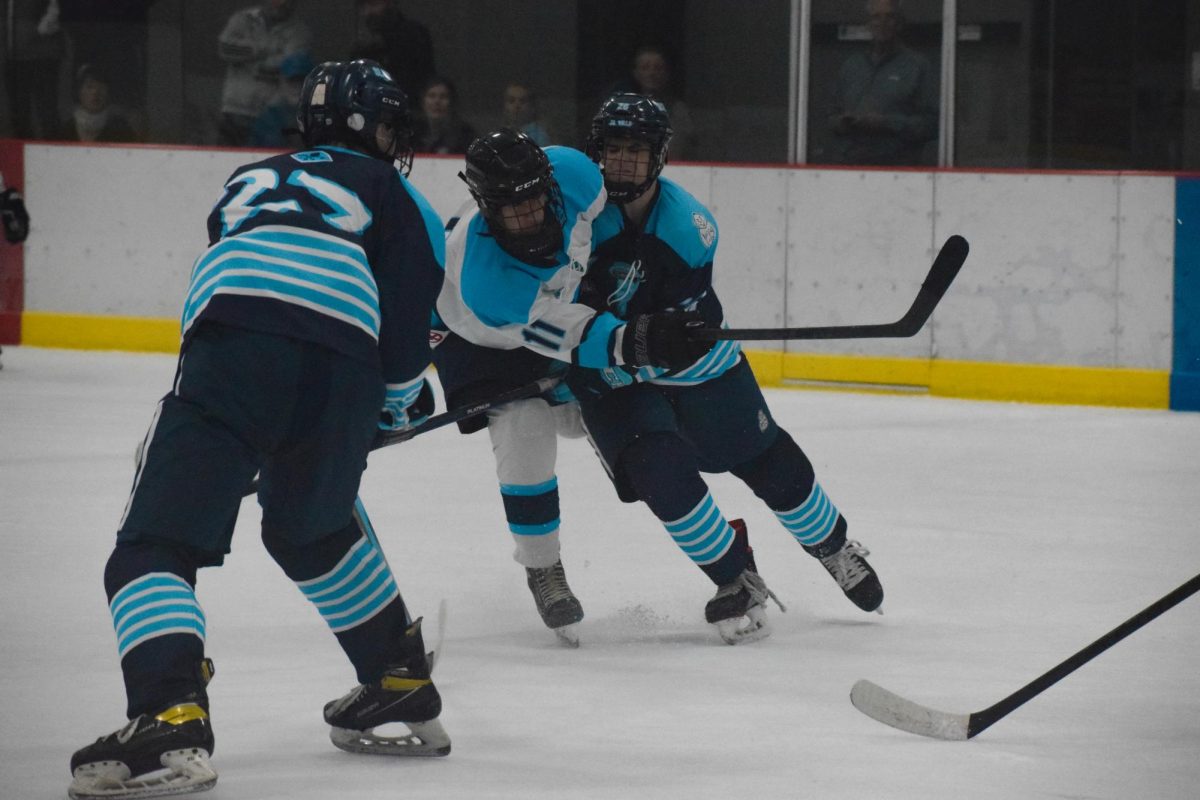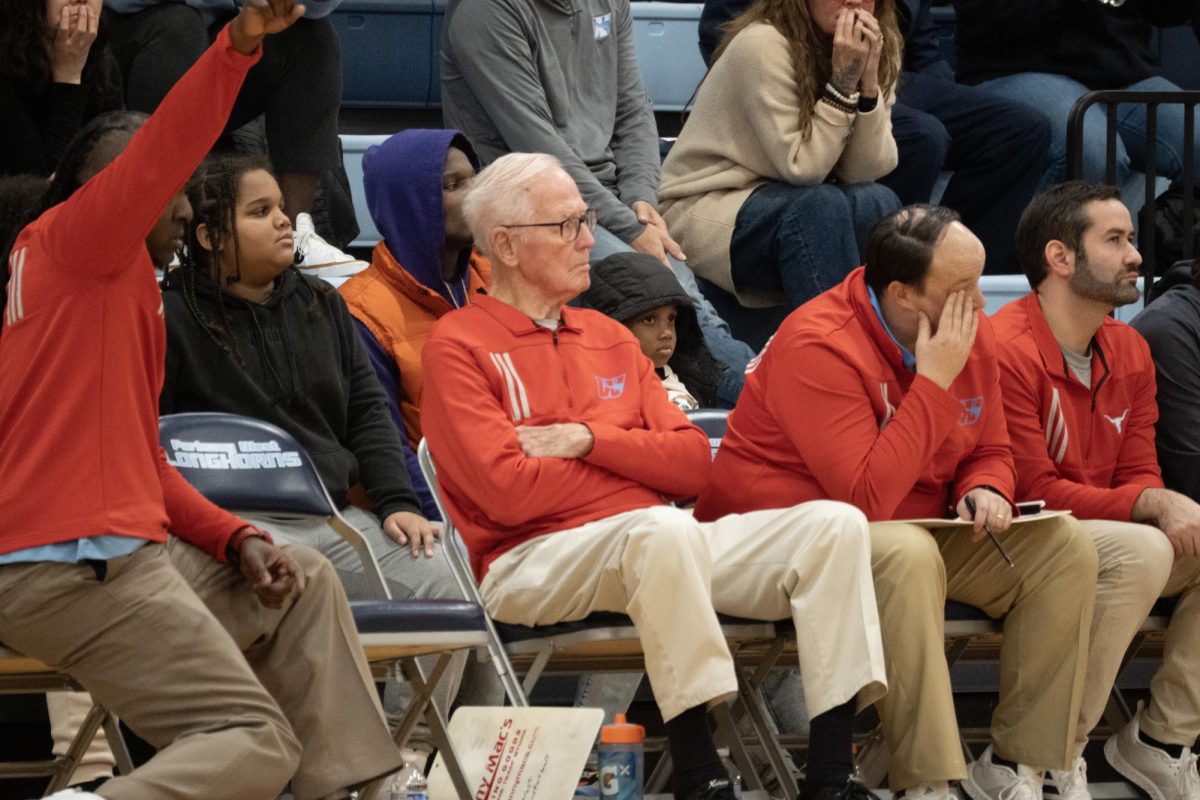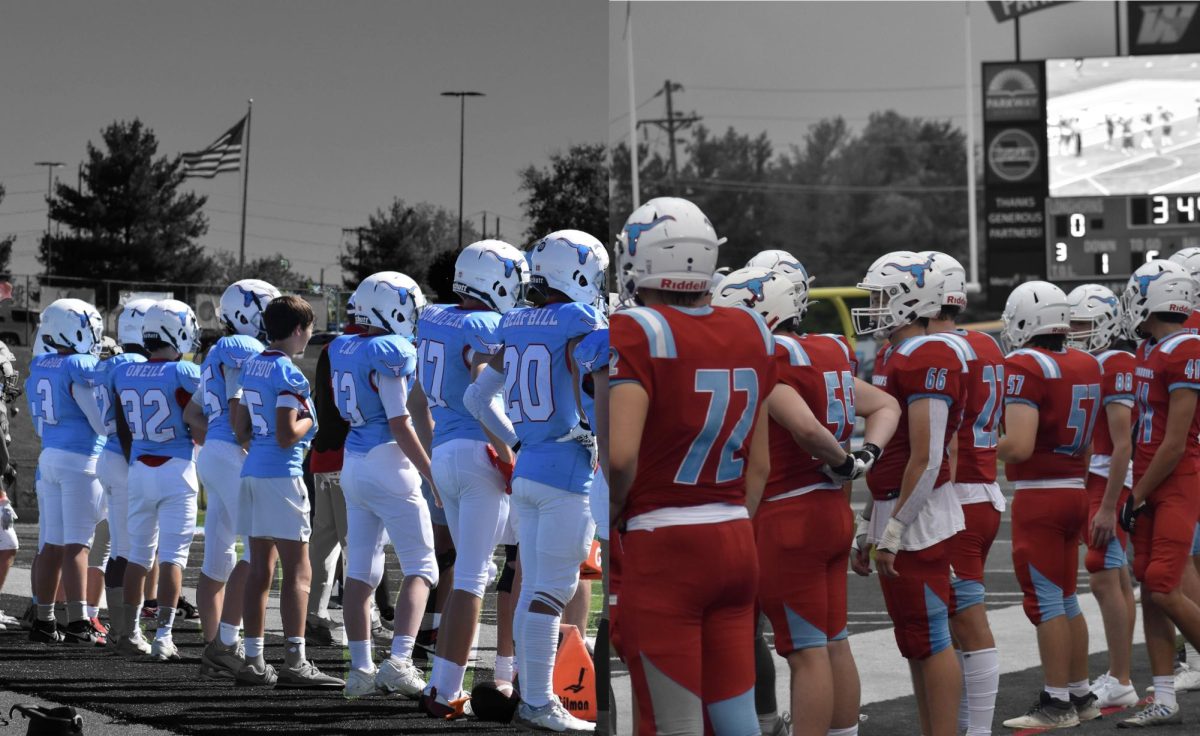Gliding quickly on the ice, the boys hockey team slides into a new season. With hockey season coming in full swing, concerns regarding ice hockey player safety are inevitable. After a collision that left National Hockey League player Adam Johnson dead, talk about adding protection for hockey players across the globe arose.
As women and men across the country find joy on the ice, the most common hockey injuries occur from concussions to back injuries. To ensure that players remain safe, we must question: how can we reduce these incidents?
Even though hockey players are covered in protective gear, there are still more than 20,000 ice hockey injuries that happen per year. For junior Collin McCammon’s club hockey team, student-athletes are now required to wear neck guards. McCammon has always worn neck guards on the ice but has teammates who dislike them.
“There’s always the chance that you could get hit by a skate when on the ice. Since [skates] are really sharp, they’re pretty dangerous. I believe hockey players need more protection, especially in areas that aren’t protected as much because injuries have happened a lot. A few days ago, there was someone [who] got cut in the leg [and] had to go to the hospital,” said McCammon.
Wearing a neck guard covers the neck area as much as possible, creating a barrier between a skate blade and a player’s neck. After being on the ice for 14 years, defensive player and senior Riley Regel has only now begun wearing a neck guard after his parents required him to wear one while playing ice hockey.
“[On the ice], you’re padded up. You’re protected everywhere and anywhere. When [the Adam Johnson story] happened, it crossed my mind that this could happen to me. This could happen to a teammate of mine. I felt obligated to wear [a neck guard] as well,” Regel said.
However, as hockey players are already dressed in pads from head to toe, many choose not to wear neck guards. Still, this extra protection helps guarantee player safety. According to USA Hockey, just 27% of players who had a neck laceration were wearing a neck guard while playing.
After Johnson’s death, center hockey player and junior Ethan Smith has noticed a growth in understanding of the importance of protection. For example, many professional players have looked into creating new ways to keep players safe. Washington Capitals right winger T.J. Oshie opted to wear an undershirt that he and his company designed, with a built-in protective guard around the neck. Through continuously developing protective gear, research and development and starting conversations, we can create a positive change on the ice.
“One of the most common injuries is getting cut by the skate blade. [Neck guards] should be required, [or] some sort of shirt or neck guard or a turtleneck that can protect the parts of your skin that are exposed. I see [that] most of the kids on the team have started to get neck guards and undershirts to protect themselves. [Johnson’s death has] created more awareness,” Smith said.



![After a thrilling point, senior Katie Byergo and junior Elle Lanferseick high-five each other on Oct. 8. With teamwork and camaraderie, Byergo worked together in the game against Lafayette High School. “[Byergo’s] is really positive with a good spirit,” Lanferseick said. “I set her [the ball] and she hits it [or] gets the kill.”](https://pwestpathfinder.com/wp-content/uploads/2025/10/DSC_9349-1-e1761159125735-1200x791.jpg)
![The varsity boys cross country team poses for a photo at the Mike Rose Soccer Complex in Memphis, Tenn. The Memphis Twilight Classic is the largest event the team attends. “[I enjoyed] hanging out with the team every day at practice,” Patten said. “I wanted to be the best I could for my team; I really wanted to help out.”](https://pwestpathfinder.com/wp-content/uploads/2025/09/XC-PHOTO-1200x822.jpg)

![Celebrating their landmark victory, the Parkway West Boys Hockey team gathers together on the ice. Over the course of the season, the team grew closer together while pursuing their final goal: winning the coveted Wickenheiser Cup. “[Winning the cup] was awesome. [As] a senior, it was super rewarding to end on a high note. It had to be the most memorable part of my career,” varsity hockey player and senior Hunter Beach said.](https://pwestpathfinder.com/wp-content/uploads/2025/03/DSC3974-Enhanced-NR-1200x799.jpg)

![Holding the disc, senior Nathan Thompson waits for an opportunity to pass to senior Timmy Fry. Parkway United’s ultimate frisbee team is made up of students from each of the four Parkway schools. “The one thing I really like about ultimate [frisbee] is the community because it’s so different from any other sport I've been a part of. [My] national teammates are people who we play against in the regular season, so we see each other all the time. It's always fun hanging out with [them],” Thompson said.](https://pwestpathfinder.com/wp-content/uploads/2024/12/C96A6823-1200x800.jpg)
![Senior Josie Grunzinger watches the football game intently from the sidelines on Oct. 18. Grunzinger stood out to the crowd as the only girl on the football team, encouraging other girls who want to play football to take a chance and go for a sport outside of their comfort zone. “If you think you could [play football] and you want to do it, just try it, because all it takes is to actually try it out,” Grunzinger said.](https://pwestpathfinder.com/wp-content/uploads/2024/10/Untitled-design-1200x675.png)


![With her arms held high, junior Jenna Rickelman throws the ball across the pool during a girls water polo practice. With hours of practice after school and over the summer, Rickelman saw many improvements in her water polo skills. “When I look at [my] stats, I'm so much better than I was last year,” Rickelman said.](https://pwestpathfinder.com/wp-content/uploads/2024/05/Untitled-design-2-.png)
